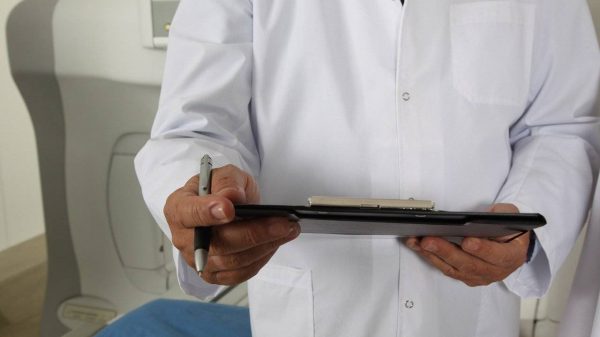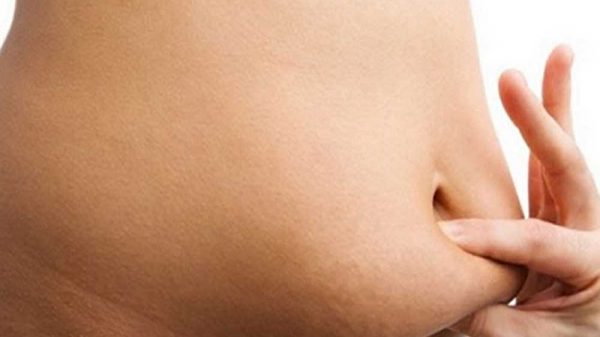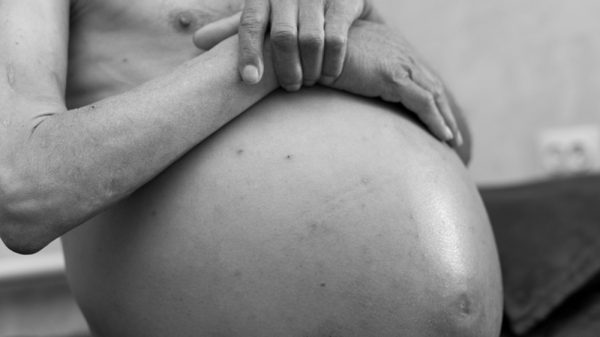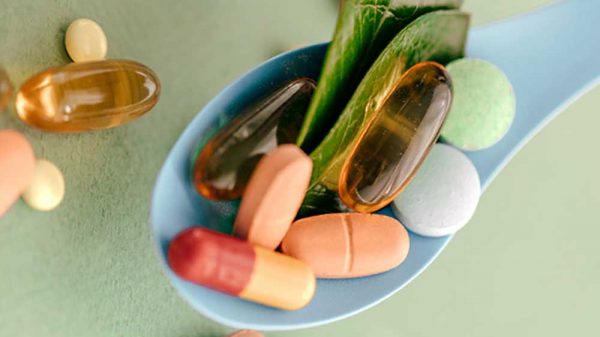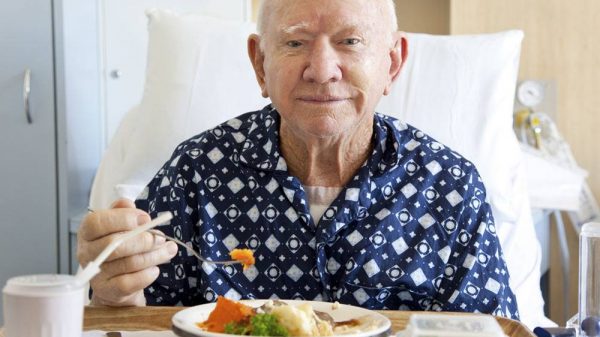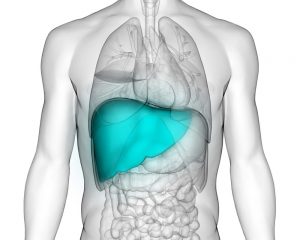Have you been told that you have an echogenic liver? If your doctor has told you that you have an echogenic liver, you may be wondering what this means. The echogenicity of your liver shows up on imaging tests and indicates the fat content of your liver.
Read on to find out more about what it means to have an echogenic liver and how you can address it.
What Is an Echogenic Liver?
Before we go any further, it’s essential first to address what it means to have an echogenic liver. Echogenicity describes how readily sound waves bounce off tissues during an ultrasound examination, which is conducted by a specialist in radiology. A higher liver echogenicity indicates a higher fatty infiltration in the liver. Sound waves more readily bounce off fat cells than healthy liver tissue. Ultrasound technology reveals decreased liver attenuation, which is a measure of healthy liver tissue. An ultrasound examination also yields a sonography image, which can also indicate the presence of liver lesions and other abnormalities.
An echogenic liver is also commonly identified with diffuse hepatic steatosis during a liver ultrasound examination. Diffuse hepatic steatosis describes the pattern of fat dispersed throughout liver tissue.
Fatty liver disease is a common cause of an echogenic liver. Fatty liver disease is characterized by the accumulation of fat within liver cells.
Other Tests to Confirm Fatty Liver Disease
An ultrasound examination isn’t the only tool used when diagnosing fatty liver disease. Numerous other tests can confirm the presence of fat within the liver.
- Other imaging tests: Magnetic resonance imaging (MRI) and computed tomography (CT) scans can also evaluate the fat content in liver cells and evaluate the health of the parenchymal liver, which is liver tissue that carries out biological functions.
- Liver biopsy: A liver biopsy requires taking a small sample from your liver and having it analyzed for abnormalities. A liver biopsy is one of the most accurate methods of diagnosing fatty liver disease.
- Liver enzymes test: A blood test can reveal the levels of liver enzymes, particularly aspartate aminotransferase (AST) and alanine aminotransferase (ALT). High levels of transferases in the blood indicate liver inflammation that’s consistent with fatty liver disease.
- Palpation: A physician may manually detect enlargement of the liver, which signifies inflammation in the liver. If your liver is larger than a normal liver size, this is a good sign that you have liver inflammation or fat buildup in liver cells.
What Is Fatty Liver Disease?
If you have an echogenic liver, there is a high probability that you’ve also been diagnosed with fatty liver disease. Fatty liver disease is also referred to as hepatic steatosis or liver steatosis, which is the buildup of fat within liver cells.
Causes of Fatty Liver Disease
Fatty liver disease is categorized as either alcoholic fatty liver disease or nonalcoholic fatty liver disease.
Alcoholic Fatty Liver Disease
Alcoholic fatty liver disease occurs as a result of prolonged alcohol abuse. Chronic heavy drinking over a longer period of time can cause significant irritation and inflammation in the liver, causing fat accumulation in liver tissue. The liver is responsible for detoxifying chemicals that we ingest, including medications and alcohol. Drinking excess alcohol puts stress on the liver and causes oxidative stress, or the buildup of waste products like reactive free radicals. Chronic oxidative stress and inflammation leads to liver damage.
Nonalcoholic Fatty liver Disease
Nonalcoholic fatty liver disease, sometimes called NAFLD, is not connected to alcohol intake. Instead, nonalcoholic fatty liver disease arises from the chronic consumption of unhealthy foods. Conditions like obesity, insulin resistance, hypertension, high triglycerides and cholesterol, and type 2 diabetes are risk factors for developing fatty liver disease.
Fatty Liver Disease May Progress When Untreated
It’s critical to treat fatty liver disease as soon as it is diagnosed, to prevent progression to other serious liver conditions. Without treatment, fatty liver disease may advance and cause significant liver damage.
Non-Alcoholic Steatohepatitis
Non-alcoholic steatohepatitis (NASH) is the first step in the progression of fatty liver disease. NASH describes a state of chronic inflammation in the liver. At this stage, you may experience worsening symptoms such as fatigue and abdominal pain.
Liver Fibrosis
As NASH progresses, fibrotic changes occur in the liver. Tough, fibrotic tissue begins to form as liver cells are continuously irritated. Symptoms may worsen during this time.
Liver Cirrhosis
Without intervention, fibrosis causes liver cirrhosis. A cirrhotic liver is characterized by a substantial amount of scarring and the transformation of healthy tissue into hardened, damaged tissue. Liver cirrhosis may be accompanied by symptoms like loss of appetite, muscle wasting, easily bruising, unintentional weight loss, jaundice, weakness, and fatigue. Severe cases of cirrhosis may be accompanied by mental symptoms as a result of hepatic encephalopathy.
Liver Failure
Over time, cirrhosis may take over all liver tissue. In this case, the liver is no longer able to carry out any of its functions. End-stage liver failure is best treated with liver transplantation. Keep in mind that developing liver fibrosis and cirrhosis also increases the risk of developing liver cancer.
Does Fatty Liver Disease Symptoms?
During the early stages, fatty liver disease often exhibits no symptoms. Or, symptoms are very nonspecific and easy to attribute to other causes. Generally, it takes many years for fatty liver disease to advance and become symptomatic. When fatty liver disease progresses, it may cause symptoms like weakness, fatigue, unintentional weight loss, yellowing of the skin (jaundice), easily bruising, spider angiomas, ascites, and muscle wasting.
Can You Reverse Fatty Liver Disease?
The good news is that fatty liver disease can be managed and possibly reversed with careful diet and lifestyle changes. The liver is a resilient and adaptive organ and is able to heal, especially when fatty liver disease is treated in early stages.
1. Lose Weight If Needed
A higher body mass index increases the likelihood that you will have fatty deposits in your liver. When you lose weight, you also lose fat content in your liver. You can encourage weight loss by cutting back on portion sizes, increasing your physical activity, and eating whole foods instead of packaged and processed foods.
2. Eat Fruits and Veggies
Eating an abundance of fruits and veggies is vital for protecting your liver from fatty liver progression and worsening liver conditions. Fruits and vegetables are chock-full of protective components like antioxidants, vitamins, and minerals. Antioxidants like polyphenols and carotenoids actually help the liver clear oxidative waste and repair from damage. Incorporate foods like beets, spinach, carrots, celery, sweet potato, apples, and berries into your diet.
3. Eat Plenty of Protein
Eating a diet high in high-quality protein is often recommended for fatty liver disease. Make sure you eat plenty of high-quality protein that offers optimal ratios of essential amino acids. Egg whites, chicken breast, and low-fat dairy are excellent sources of high-quality protein. Essential amino acids help the body repair from injury, build muscle tissue, and produce enzymes and hormones.
4. Drink Coffee and Green Tea
Both coffee and green tea are liver-friendly drinks that you can incorporate into your daily routine. When preparing coffee, leave out heavy cream and sugar to make your coffee drink as healthy as possible.
5. Get Omega-3 Fatty Acids
Omega-3 fatty acids are potent anti-inflammatory agents that may help your body repair from liver inflammation and damage. Fatty fish like salmon and mackerel are rich in omega-3 fatty acids like eicosapentaenoic acid (EPA) and docosahexaenoic acid (DHA).
6. Limit Alcohol
Limiting alcohol is vital for protecting your liver from fatty liver disease progression or liver disease. Keep your alcohol intake at a minimum or aim to cut it out of your diet altogether. The liver responds very favorably to reduced or eliminated alcohol intake.
If you struggle with alcohol dependence, avoid going cold turkey with alcohol. Breaking an alcohol dependency often requires guidance from a medical professional as well as medical oversight. Suddenly stopping alcohol consumption may have serious repercussions for your health. Always make sure that you have discussed a plan with your healthcare provider.
7. Steer Clear of Added Sugar and Saturated Fat
Both added sugar and saturated fat contribute to fatty liver disease. Consuming large amounts of added sugar and saturated fat are also linked to associated conditions like type 2 diabetes, insulin resistance, and obesity.
So, what happens when we consume excess sugar? When we eat an abundance of sugar food, glucose travels into the bloodstream and spikes blood sugar. The pancreas then releases insulin, which signals to cells throughout the body to uptake the glucose and use it as energy. However, the body can’t use all of the sugar at once. So, leftover sugar is converted into fat and stored throughout the body. Chronic consumption of sugar also causes insulin to function less effectively, worsening metabolic dysfunction.
Saturated fat essentially clogs up insulin receptors, meaning that insulin becomes less effective. Saturated fat negatively impacts metabolism and also increases the risk of heart disease. TO cut down on your saturated fat intake, steer clear of full-fat animal products like whole milk, hard cheese, cream, butter, and animal fat.
8. Increase Your Physical Activity
Incorporating more activity into your day has numerous benefits for your health, including your liver. Exercising more frequently helps reduce systemic inflammation while also encouraging weight loss and a healthy metabolism. A healthier metabolism may help your body clear fat from the liver.
Echogenic Liver May Accompany Other Conditions
In addition to fatty liver disease, an echogenic liver might accompany other root causes. Here are a few examples:
- Viral hepatitis: Hepatitis A, hepatitis B, and hepatitis C are viral infections that target the liver. Hepatitis A and B are not so common in the United States. Hepatitis C tends to be more common. When untreated, chronic hepatitis may lead to fatty deposits, fibrosis, and cirrhosis.
- Genetic disorders: Certain genetic disorders may cause fat accumulation within liver cells, leading to fatty liver disease and other conditions.
Who Treats Fatty Liver Disease?
An internist will be involved in treating fatty liver disease by serving as a point of contact for all of your health professionals. You will also likely be referred to and treated by professionals in hepatology or gastroenterology, depending on the condition causing fat accumulation in the liver.
Things to Keep in Mind
Fatty liver disease is very responsive to interventions. However, before starting any supplements or drastically changing your diet, it’s a good idea to talk to your doctor and ensure that the changes you’re making support your specific condition and address the root cause of echogenic liver.
Conclusion
An echogenic liver is an ultrasound reading that indicates a higher level of fat in the liver. A high content of fat in the liver is indicative of fatty liver disease. Although fatty liver disease may progress, it can also be reversed with diet and lifestyle changes. When striving to protect your liver, aim to drink lots of water, eat high-quality protein, and lots of veggies. Losing weight and managing other health conditions like type 2 diabetes is a good idea.

